As springtime takes hold in North Georgia, you’re looking at new life budding from your awakening lawn. But if you want your lawn to reach peak condition this spring and summer, it’s important to give it a little early-season pampering. To help you do that, our lawn experts have put together 12 spring lawn care tips specific to North Georgia.
In this article:
- Rake the Lawn
- Dethatch to Patch
- Treat Diseases and Pests
- Overseed
- Test Soil
- Feed Your Lawn
- Start Mowing
- Water it Right
- Apply Pre-emergent Herbicide
- Don’t Aerate … Yet
- Prep Lawn Care Tools
- Invest in a Good Lawn Care Team
1. Rake and Clean the Winter Off Your Lawn
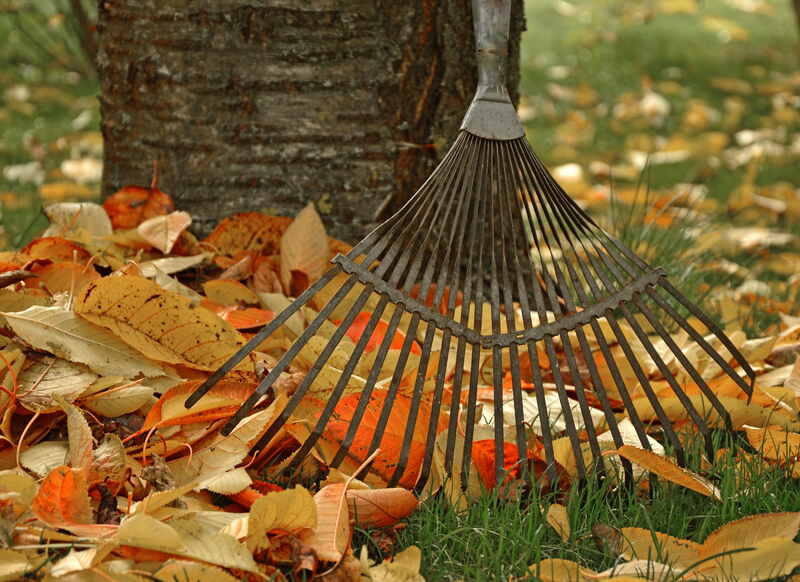
Photo Credit: Pxfuel
Thorough cleaning creates a solid base for your lawn. Over time, your lawn collects dead turfgrass, thatch, leaves, and other debris left behind from the fall and winter. You may have raked well during the fall, but you should still rake it in the spring. Raking allows oxygen and water to penetrate deep into the soil and refresh your lawn for new growth.
Don’t neglect the rest of your yard, either. You should:
- Prune and trim all shrubs and trees
- Collect tree branches, rocks and pet waste
- Clean the gutters and treat them for mold if necessary
- Clean the flower beds
2. Dethatch to Patch
Thatch is a layer that builds up above the surface of soil. It is comprised of organic matter such as leaves, grass clippings, etc., and essentially covers and cushions the grass beneath. In small amounts, it feeds your lawn as it decomposes and helps soil retain moisture.
But, too much of anything is bad. Excess thatch can suffocate your lawn and create a moist, inviting space for pests. This often occurs in patches – dead grass and other debris forms a thick mat above healthy soil and prevents air, nutrients, and water from penetrating the root system.
When thatch reaches an inch or more, know that it’s time to pull out your rake or dethatcher (verticutter or vertical mower) from the shed.
When do you dethatch? The best time to detach your North Georgia lawn is late spring through early summer. And for cool-season lawns, late summer and early fall is the right time to dethatch.
3. Treat Diseases and Pests
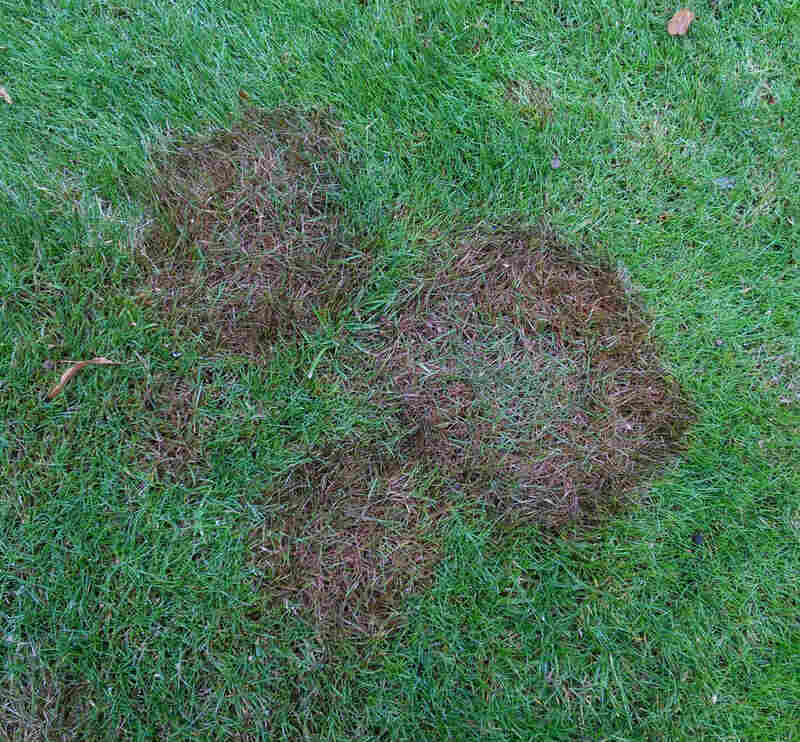
Photo Credit: Kris Lord / Flickr / CC BY 2.0
Springtime in Georgia typically breeds diseases because rising temperatures and humidity create an ideal breeding ground for bugs and microbes. This is how your lawn generally will tell you that something’s wrong:
- Faded brown patches
- Slimy patches of grass
- Reddish-black or purplish spots on leaf blades
- Cobweb-like growth
Before new growth starts, it’s important to treat any lawn disease. Some general tips that can help your lawn stay repel diseases and pests include:
- Make sure it drains well
- Plant cool-season grasses since they are less susceptible to diseases
- Monitor and manage nitrogen levels in the soil
- Irrigate correctly
A little knowledge about Georgia’s turfgrass diseases and their growth habits will help you catch and treat them timely. Here are some lawn diseases that are common in North Georgia.
Brown Patch
Symptoms of brown patch in a lawn:
- Rings or patches of blighted grass that range from 5 inches to 10 feet in diameter.
- Leaf spots
- “Smoke rings” with brown, thin borders appear in the early mornings
How to treat brown patch:
- Treat with a fungicide that has thiophanate-methyl, triadimefon, PCNB, myclobutanil, propiconazole, or maneb as an active ingredient to limit the spread.
Fairy Ring
Symptoms of fairy ring in a lawn:
- Mushrooms in a circular pattern. The rings or arcs have dark-green or brown outer edges
- Rings are 2 to 15 feet in diameter
How to treat fairy ring:
- Aerate the soil and use a wetting agent
- Reduce thatch
- Apply fungicides on the site only, in large volumes of water or must be watered in
Dollar Spot
Symptoms of dollar spot in a lawn:
- A velvety, white growth atop your turf in the mornings
- Straw-colored, small spots on the grass, no larger than a silver dollar
How to treat dollar spot:
- Dollar spot fungus comes in several varieties, and each strain is immune to some kind of fungicide. Try to alternate several different fungicides to see what works for your lawn.
Rust
Symptoms of rust in a lawn:
- Light-yellow flecks on grass blades and sheaths that elongate and enlarge to finally turn yellow
- Infected area is raised and has yellowish-orange to reddish-brown spores
How to treat rust:
- Water the lawn generously and apply a high-nitrogen, quick-release fertilizer to stimulate growth
- Mow rust-infected area regularly and rake the site
- If lawn is well-established, use a fungicide to control the outbreak
Slime Mold
Symptoms of slime mold in a lawn:
- Brownish-yellow, gray, or black coat on grass blades; some might also have small, round spores over the residue coating
How to treat slime mold:
- Slime mold is activated by sliminess. Once the weather gets dry, it will disappear on its own. The residue is easy to clean too; just use a garden hose sprayer or a broom.
4. Overseed
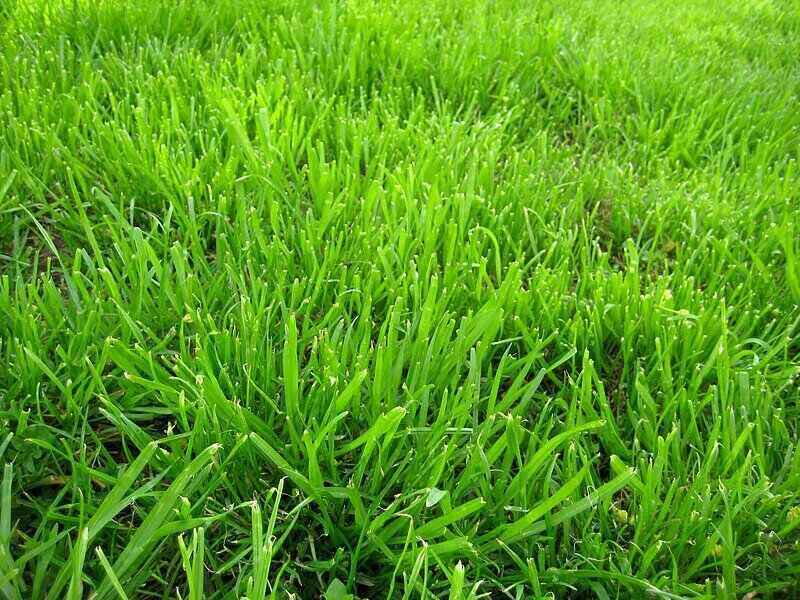
Photo Credit: Lupus in Saxonia / Wikimedia Commons / CC BY-SA 4.0
Another excellent way of helping your lawn develop a thick, green carpet through the summer is to overseed in spring.
Overseeding involves laying grass seeds over your existing lawn so more grass can grow. Understandably, the right time to do this is the growing season. This fills in thinning or bare patches in the early spring so your lawn is ready to contend with Georgia’s summer heat.
When is the right time to overseed?
For warm-season grasses growing in Georgia, plant new seeds between March and July. and for cool-season grasses, the most appropriate time to overseed is between September and mid-October.
NOTE: Make sure that you overseed after your lawn has received all the treatments it needs. Preferably, you’d do this after you aerate and dethatch to make sure the seeds have better access to the soil. The ideal soil temperature should be around 70 to 90 degrees Fahrenheit.
5. Test the Soil
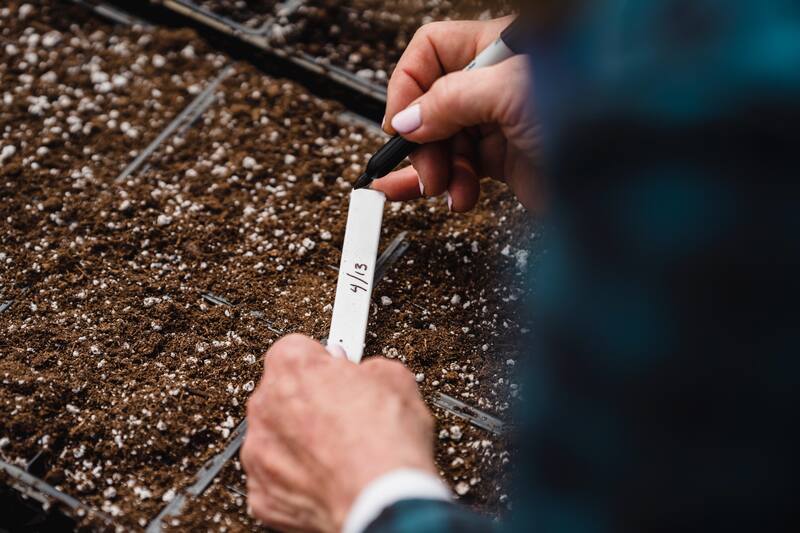
Photo Credit: Pexels
It’s important to test the soil before you start. North Georgia lawns usually do just fine despite their clay soils, but this doesn’t guarantee that the soil on your lawn is ideal for what you grow. A soil test let you know what your lawn has and what it lacks.
What’s a soil test? It’s simply a check for the pH level of the soil, acidity, nutrient content, composition, and other characteristics to determine your lawn’s health. Soil tests also reveal the fertility levels, salt levels, and organic matter percentages of the soil.
You can test the soil using a DIY kit and read the results according to the guidelines given. Or you can send a sample to your local Extension Service for expert analysis.The test will indicate what soil amendments you should add, such as phosphorus, lime, calcium, potassium, or magnesium.
Make sure you apply all the soil amendments at least one month prior to fertilizing your lawn for the first time. Fertilizers and amendments can counteract or interfere with each other.
6. Fertilize
Your soil test will also indicate the appropriate fertilizer applications for your turf. Your Georgia lawn might not need any fertilizer at all. But make sure you get to the fertilizing part after your lawn has greened up and is actively growing.
The best time to fertilize in North Georgia is late spring through summer for warm-season grasses. We recommend using a slow-release fertilizer to aid steady and consistent growth through the spring.
7. Start Mowing
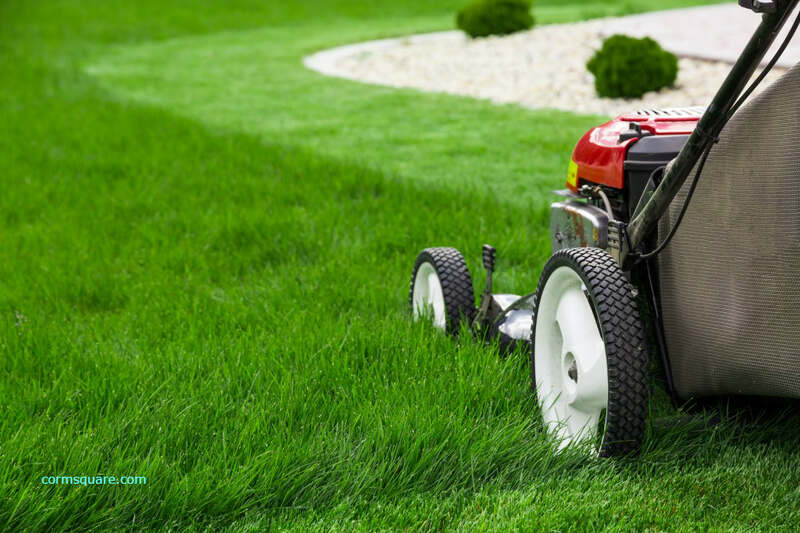
Photo Credit: Prasannanossam3 / Wikimedia Commons / CC BY-SA 4.0
Get ready for the first mow of the year as soon as you see your lawn green up in the spring. For most grass species, you can cut when the height exceeds 2 inches.
A few general rules to keep in mind about lawn mowing:
- Mow when the grass is dry. Morning dew also counts as a wet lawn; avoid mowing early in the mornings, too.
- Sharpen the mower blade to make sure the mow is clean and uniform. Ragged cuts can damage the grass and invite diseases.
- Do not cut more than one-third of the grass’s height in a mowing session.
- Don’t let clippings build up in the lawn as it creates an overly thick layer of thatch.
When you start, know the right mowing height for your grass type. Both warm-season and cool-season grasses can thrive in Georgia if you take proper care. Here’s the recommended mowing height for 7seven grass types that do well in North Georgia:
| Grass type | Recommended height |
| Bermudagrass | 1 ¼ – 1 ½ inches |
| Zoysiagrass | 1 – 2 inches |
| St. Augustinegrass | 2 -3 inches |
| Centipedegrass | 1 – 2 inches |
| Perennial ryegrass | 1.5 – 3 inches |
| Tall fescue | 2 – 3 inches |
| Kentucky bluegrass | 2.5 – 3 inches |
8. Water It Right
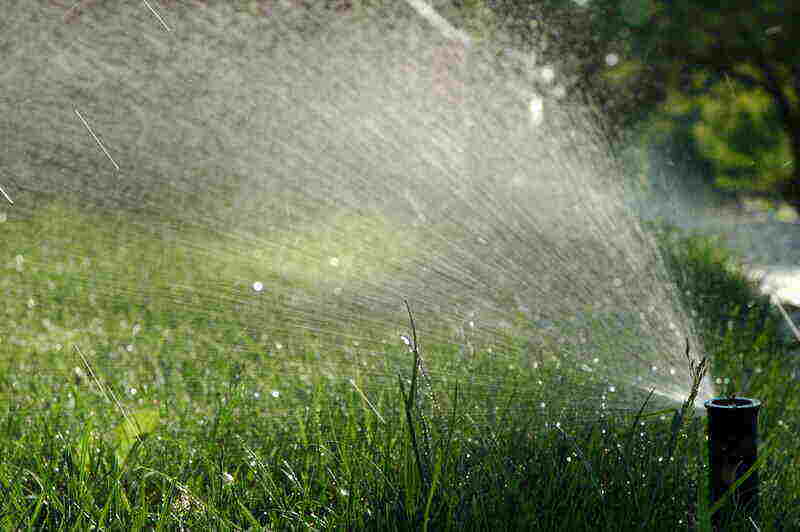
Photo Credit: UBC Micrometeorology / Flickr / CC BY 2.0
Your lawn’s watering schedule has a huge impact on its overall health. Sometimes, all you need to do to fix a dull lawn is to water it more precisely.
In early spring, the soil is still wet and is recovering from the winter. This is not the right time to start watering. Start watering only after the grass starts to grow. Some watering tips to help you build a healthy lawn:
- If your lawn has fully established, you generally need to give it 1 to 1.5 inches of water per week.
- The best time to water your lawn is before 10 a.m., after the morning dew has evaporated and before the sun gets too hot to evaporate the water.
- Avoid watering in the evenings because it won’t dry adequately. A wet, moist lawn in the dark is an open invitation for pests and disease.
- Water less frequently and for longer periods. This develops and maintains a deep, healthy root system. Watering for short periods and too often will promote shallow and weak roots.
- Don’t overwater. It leaves your lawn susceptible to fungi, pests, and thatch.
- Similarly, underwatering will starve the grass, and your green budding carpet will lose its color and strength slowly. Wilting, tanning, or grass retaining footprints are some common signs that your yard isn’t getting enough water.
- If you can, invest in a good irrigation system so your yard is watered uniformly and thoroughly.
9. Apply Pre-emergent Herbicide and Keep Weeds at Bay
An important spring task for homeowners in North Georgia is to stop weeds in their tracks. The ideal time to apply a pre-emergent weed blocker in Georgia is from February to March, before applying fertilizer. The soil temperature should be somewhere between 50 and 55 degrees Fahrenheit at this time.
Make sure you apply the pre-emergent herbicide before you plant new grass seeds. This is because if it’s too close to the time you plant new seeds it will make it difficult for grass to grow.
Pre-emergent herbicides are typically easy to apply due to their granular texture. You can apply it with a spreader but make sure you’re using protective equipment and taking all precautions before application.
10. Don’t Aerate Just Yet
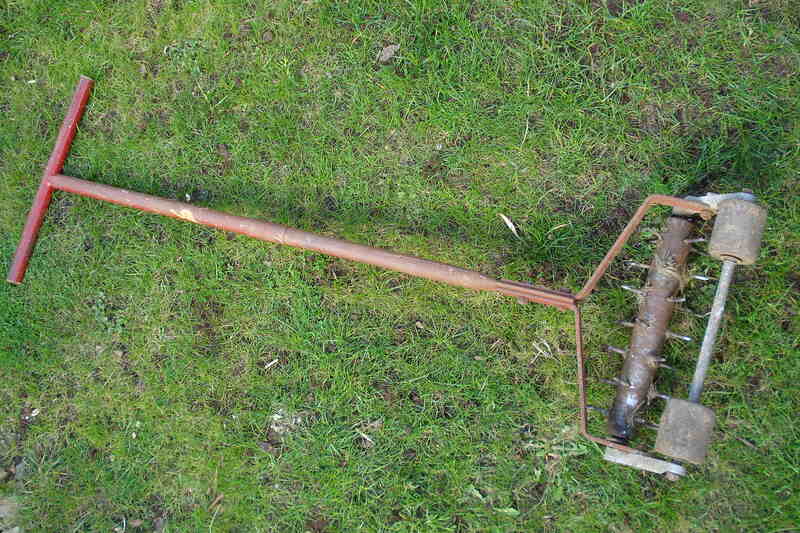
Photo Credit: allispossible.org.uk / Flickr / CC BY 2.0
Aeration involves poking holes in compacted soil to let air, nutrients, and water reach grass roots better. But this practice isn’t suitable for springtime because:
- Spring is the growing season for all sorts of organisms. The holes you poke will become perfect breeding and nesting grounds for weed seeds looking to germinate.
- Aerating in hot Georgia summers can dry out the soil.
There is one exception to this: if you find your yard lacking in spring growth because the soil is heavily compacted, you might want to consider aerating after all.
11. Pull Out and Prep Lawn Care Tools
As your Georgia lawn is waking up from its winter nap, you need to gear up for what’s coming. Pull out your power tools, weed eater, lawn mower, and hedge trimmer from their slumber and get them ready for weekly work.
Here’s a little checklist to help you do some basic tool management in the spring:
- Ensure that the weed eater has enough line
- Sharpen lawn mower blades
- Check batteries for powered tools to see if they need a replacement
- Change the oil and replace your gas-powered lawn mower’s spark plug and filter
12. Invest in a Good Lawn Care Team
Working on your lawn can be relaxing and super rewarding; no arguments there. But many homeowners simply don’t have the time, expertise to do it.
Even if you’re a DIYer, it might be hard to manage everything as the growth starts. Hiring a good lawn care team for weekly or monthly lawn maintenance is the best solution. They’re trained and appropriately equipped to deal with all types of landscapes and solve your lawn issues.
You can call in one of our lawn care pros to lend a hand this spring as you prep for the warm months ahead.
Main Image Credit: Greenville, GA / Saverivers / Wikimedia Commons / CC BY-SA 3.0

